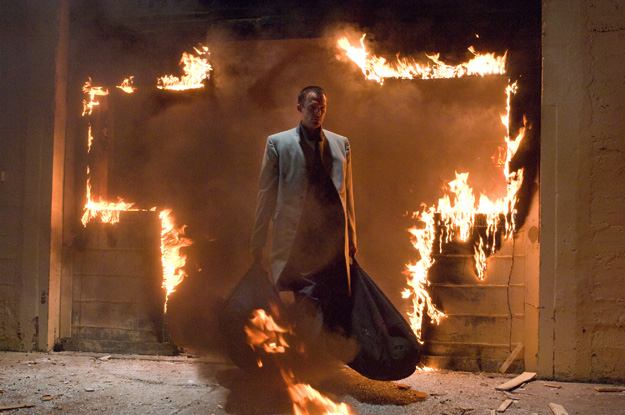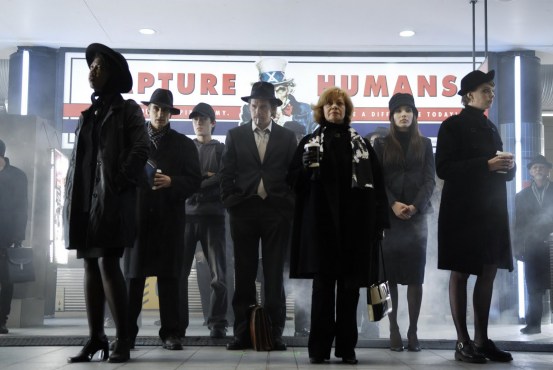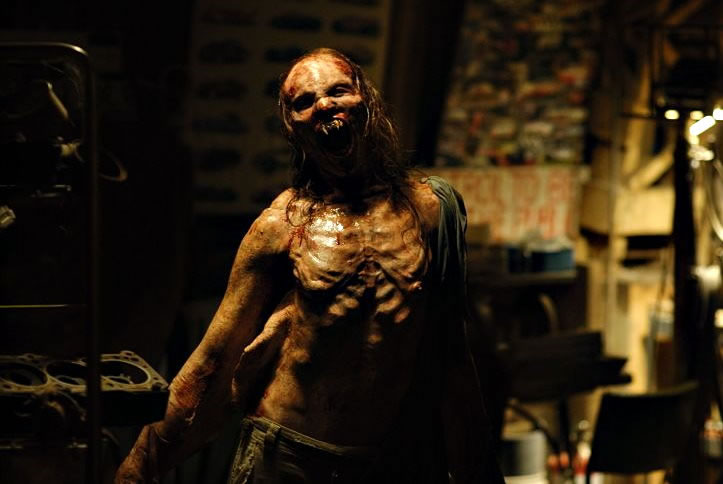 “She exerts enormous power, doesn’t she, Lawrence?†Sir John Talbot (Anthony Hopkins) gazes into a telescope at “That orb’d maiden with white fire laden, whom mortals call the moon.†At his side is his estranged son (Benicio del Toro). Lawrence, of course, has no idea just how strong a pull the moon will soon have over him.
“She exerts enormous power, doesn’t she, Lawrence?†Sir John Talbot (Anthony Hopkins) gazes into a telescope at “That orb’d maiden with white fire laden, whom mortals call the moon.†At his side is his estranged son (Benicio del Toro). Lawrence, of course, has no idea just how strong a pull the moon will soon have over him.
The full moon still holds sway over the imaginations, and debatably, physiological responses, of mortals. Again and again, it draws us back to werewolf mythology. Then again, if you think werewolves are only mythology, you’re probably not one of the souls who has run into the Bray Road Beast, or one of the 102 French peasants who met their end in the jaws of the Beast of Gevaudan. The Wolfman is worth watching. I will say, it isn’t very scary. But then again, scary is hard to do.
While I wouldn’t want to tangle with a werewolf in real life, they are not among Hollywood’s scariest of monsters. Their existence is limited to two or three days a month. They have none of the intellect of Dracula, the omnipresence of Pazuzu, or the reproductive speed of Aliens. This, of course left the writers with the problem of how to build suspense and terror in between full moons and, of course, fill the movie up with enough jump-scares and bloodshed to keep a 21st century audience interested. They actually did a pretty good job. While some werewolf movies act like they have the authority to summon a full moon at their whim, The Wolfman actually allows such phenomena to happen at their natural time, bothering to fill the weeks in between with plausible plot developments.
Full moon #1: Ben Talbot, walking through Stock Scary Scene #F785, strolls alone into the woods, shouting “I know you’re out there! Show yourself!†He is then fatally mauled by the Wolfman. Never walk alone into the dark shouting “show yourself,†kids, it won’t end well.
His brother, Lawrence is summoned from London for Ben’s funeral. He returns to Talbot Hall in Blackmoore, where we meet his father, Sir John, and Ben’s fiancé, Gwen Conliff (Emily Blunt). We then get a lot of back-story about their family history and hear the locals talk of two other gruesome deaths the night of Ben’s. “Whatever did it was big, had claws, and didn’t mind a load of buckshot.â€
Full moon #2: Talbot goes to a nearby Gypsy camp to inquire about a medallion he found among Ben’s belongings. A group of villagers shows up armed, suspecting the Gypsies’ performing bear caused the deaths. However, during the ensuing confrontation, a strange creature, visible only as a blur and a shadow, attacks the camp, killing Brittons and Gypsyies alike. Talbot sees the creature chasing a panicked boy, intervenes, and is, you guessed it, bitten but not killed.
As Talbot lies in bed, recovering, we get more dialogue, flashbacks, a doctor who shakes his head when Talbot is up and walking around after a week, and a visit from a rational-minded inspector (Hugo Weaving), trying to get to the bottom of the murders. By now, of course, the villagers know what’s up, and everyone is making silver bullets, though we later find out that most of them can’t hit the broad side of a barn.
Full moon #3, of course, is Talbot’s first transformation, after which, he is arrested, believed to be a homicidal lunatic, and suffers four weeks of, well, somewhat realistic torment at the hands of a 19th century asylum. And of course, there are more flashbacks, more hallucinations, and more back-story.
Full moon #4: We see Talbot running amok in Downtown London, which is pretty cool. Then Talbot returns to Blackmoore for Full moon #5.
The Wolfman is a fairly faithful adaptation of the 1941 film of the same name starring Lon Chaney, Jr. (If anybody cares.) It does, however, contain some plot enhancements worthy of modern special effects, including a great monster-vs.-monster sequence toward the end. There is also a climactic scene between Lawrence as the Wolfman and Gwen that plays out beautifully.
That said, there are also some eye-roll-worthy techniques that they use, such as cramming the movie full of dream sequences and hallucinations, mainly to give themselves enough  jump-scares and severed heads to fill up the trailer. Even without the hallucinations, this is one of the goriest movies I have ever seen. If the body count of The Wolfman doesn’t break 100, it’s got to be close, especially if you count each of the pieces most of the bodies wind up in. Think When Animals Attack on steroids. Then again, I doubt lupine predation was ever a tidy affair.
Overall, this is a highly engaging picture with an interesting story and some good action. If you’ve got a strong stomach, rent it, make some popcorn, and enjoy. Then go outside, and see if you can fight the urge to howl at the moon!
[Rating:3.5/5]







































